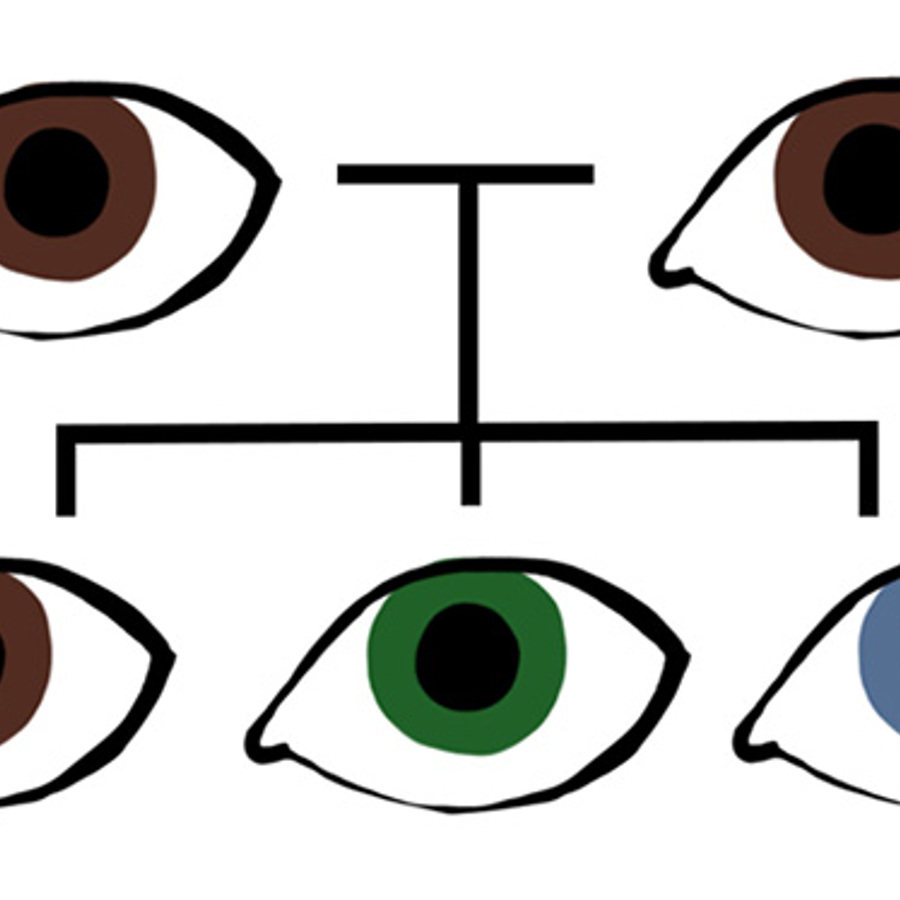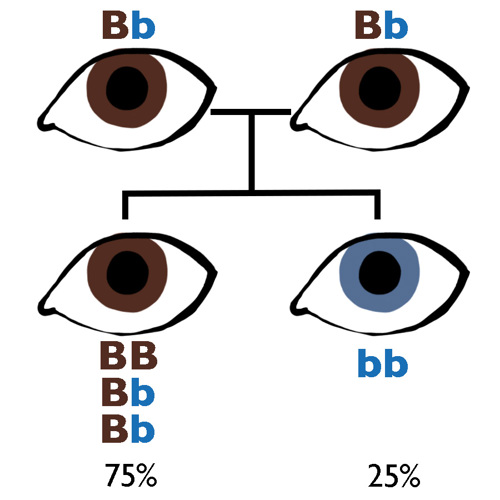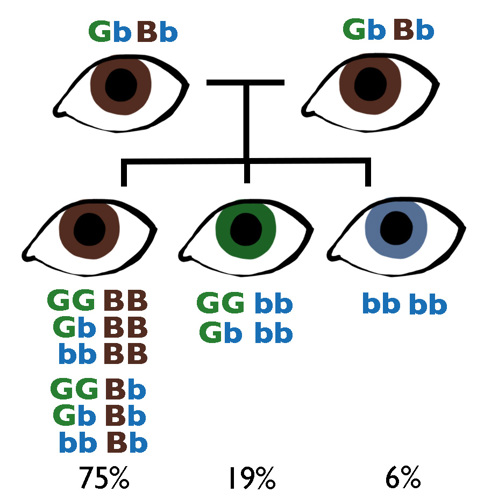
Is it possible for two brown eyed people to have a child with blue eyes?
March 13, 2004

- Related Topics:
- Eye color,
- Classical genetics,
- Dominant and recessive,
- Pigmentation traits,
- Common questions
An undergraduate from Tennessee and a curious adult from Ohio ask:
“Is it possible for two brown eyed people to have a child with blue eyes? Both of these people have one parent with blue eyes, and one parent with brown eyes. Can brown-eyed parents have a blue-eyed baby?”
Editor’s Note (4/14/2021): The following article and diagrams present an over-simplified, outdated version of eye color genetics. Eye color is influenced by at least 50 genes, not all of which are well understood.
Yes. The short answer is that brown-eyed parents can have kids with brown, blue or virtually any other color eyes. Eye color is very complicated and involves many genes.
To begin to understand how parents with brown eyes could have blue-eyed children, let's imagine that eye color is due to a single gene, EYCL3, which comes in two versions or alleles, brown (B) and blue (b).
Remember that for most genes (including eye color), you have two copies of each gene, and that you inherited one from your mother and one from your father. The brown version of the eye color gene (B) is dominant over the blue version (b). Dominant means that if either of your genes is the B version, then you will have brown eyes. Genetically speaking, then, people with brown eyes could be either BB or Bb while people with blue eyes could only be bb.

For two parents with brown eyes to have a blue-eyed child, both parents must genetically be Bb. When this happens, there is a 1 in 4 chance that these parents will have a bb child with blue eyes.
Unfortunately, eye color is not as simple as this. Besides the EYCL3 gene described above, at least two other genes, EYCL1 and EYCL2, are also involved. Although this set of genes explains how people can have green eyes, it does a poor job of explaining how blue-eyed parents could have brown-eyed children or how anyone can have hazel or gray eyes at all.
To understand green eyes in all of this, we only need to review EYCL1 and EYCL3 (EYCL2 is a poorly understood brown eye color gene).
Remember, EYCL3 has two versions, brown (B) and blue (b). EYCL1 also comes in two versions, green (G) and blue (b). The way these genes work is that if you have a B allele, you will have brown eyes (B is dominant over b and G), if you have a G allele and no B allele, you will have green eyes (G is dominant over b) and if you have all b genes, then you will have blue eyes.

I hope this helps to answer your question. As you can tell, while some progress has been made, eye color is a very complex, polygenic trait that is not yet fully understood.

Author: Dr. D. Barry Starr
Barry served as The Tech Geneticist from 2002-2018. He founded Ask-a-Geneticist, answered thousands of questions submitted by people from all around the world, and oversaw and edited all articles published during his tenure. AAG is part of the Stanford at The Tech program, which brings Stanford scientists to The Tech to answer questions for this site, as well as to run science activities with visitors at The Tech Interactive in downtown San Jose.
 Skip Navigation
Skip Navigation
